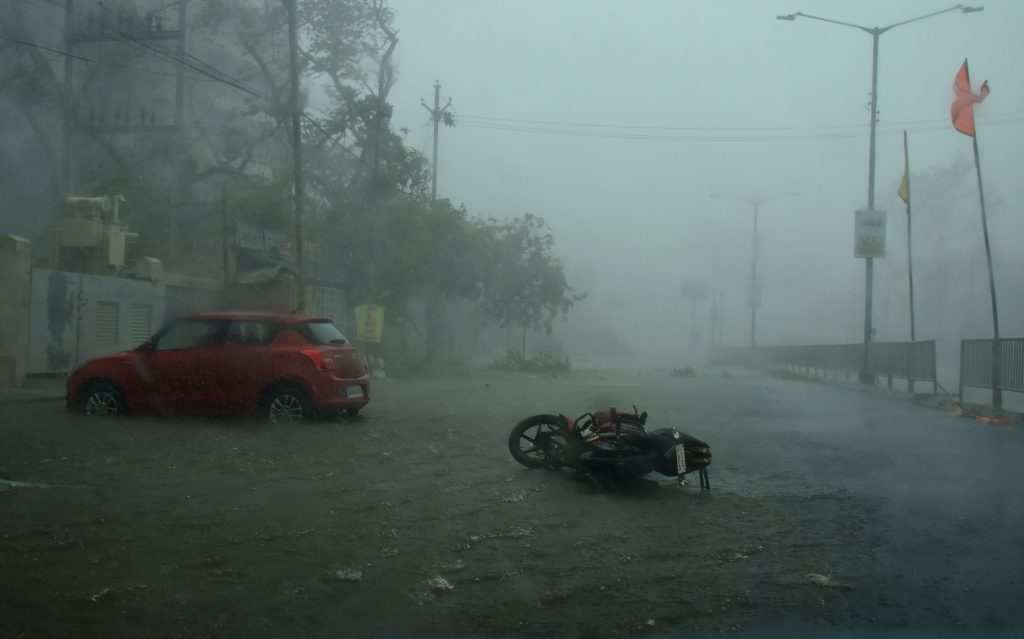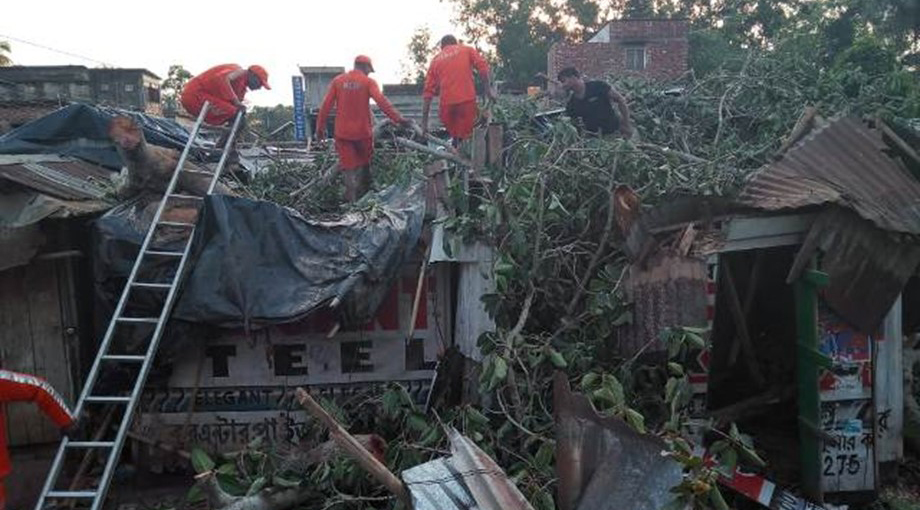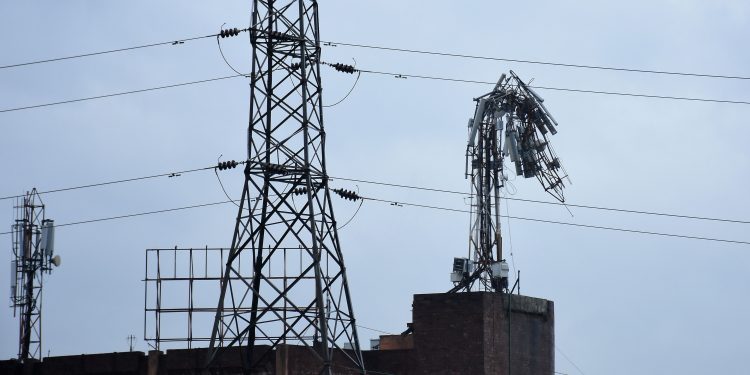When nature’s forces are unleashed, human beings can only look on helplessly and hope that the disaster can be contained. The extremely severe cyclonic storm Fani which battered the coastal districts of Odisha May 3 has put a sudden brake on the state’s growth trajectory. Though timely information from the Met Department and evacuation of thousands of people saved many lives, Fani has pushed back Odisha at least by a decade in terms of infrastructure development, say experts.
In Odisha, devastation on a similar scale was last witnessed in 1999. After making landfall near Paradip in Jagatsinghpur district October 29, the Super Cyclone claimed at least 10,000 human lives (some estimates say 30,000) and 4,50,000 cattle heads, according to official figures. Two million houses and 1.84 million hectares of crop area were damaged with property loss amounting to Rs 18,000 crore. This forced the state government to set up bodies like the Odisha State Disaster Management Authority (OSDMA) and Odisha Disaster Rapid Action Force (ODRAF) to help in the relief, rescue, rehabilitation and reconstruction process. In the last two decades, the state has faced other cyclones like Phailin, Helen and Hudhud, but every time the people have displayed exemplary resilience and bounced back in no time. With Fani leaving a trail of destruction in many parts of the state, Sunday POST takes a quick look at how the state dealt with the aftermath of cyclones on previous occasions.
After the cyclone in 1999, the state government used a phased approach, starting with rebuilding homes and communities, then progressing to infrastructure and finally to economic development, fitted to respond to evolving needs.

Arun Behera of Jagatsinghpur who was 15 at that time said, “The cyclone destroyed the area killing more than ten thousand people in these villages. With the transport, telecom and power systems paralysed, the entire coastal tract was devastated. The cyclone exposed the inadequacies in dealing with disasters and their aftermath. The vulnerability of the state, its people and the inadequate preparedness level called for a new approach to management of disasters in the state. But with well thought out proposals and implementation, the area recovered within five years.”
The government employed community-based development programmes to rebuild homes and infrastructure. It also worked on disaster risk reduction, capacity building, gender inclusiveness, and environmental protection to enhance quality of reconstruction.
These approaches pioneered in Erasama, one of the worst-hit regions in the Super Cyclone, and became an example for other places in designing their own disaster response strategies.
Because of its geographical position, Erasama is certain to face natural disasters in the future. But when the next one strikes, it will be well prepared with more shelter areas and latest technologies to deal with the crisis. The villagers, who paid such a heavy price twenty years ago, are now in a position to give back to the rest of the state.
Puspalata Bhuyan, a resident of the area, said, “The 1999 cyclone claimed many lives and destroyed properties. But many poor families got their pucca houses after the disaster struck Jagatsinghpur district. The cyclone made people of other districts replace their kutcha houses with pucca ones. The calamity changed many lives and taught them how to survive in adverse situations.”
Extremely severe cyclonic storm Phailin made landfall near Gopalpur in southern Odisha, October 11, 2013. It prompted the country’s biggest evacuation drive in 23 years with more than five lakhs people moved up from the coastline to safer places. The wind speed touched 200 kmh and caused widespread devastation in Berhampur resulting in fallen trees, uprooted utility poles and broken walls. The loss was estimated at Rs 42.4 billion. The cyclone damaged crops in over 500,000 hectares of agricultural land.

Hemanta Roul of Berhampur said, “On the day of Phailin, the howling of the wind as darkness fell still echoes in my memory like a nightmare. The next morning, we woke up to uprooted trees, a fallen boundary wall, and blocked roads. But we were fortunate to be alive.”
“Unlike 20 years ago, the Odisha government is better equipped now and that has helped in saving lives. With the latest technologies and constant effort, our area got a new look within a year. As there are cyclone shelters, casualties were very less and recovery was quick,” he added.
Problems are aplenty at the moment. Acute shortage of skilled hands, paucity of funds coupled with the enormity of damage has delayed the restoration process. However, the people’s spirit is indomitable, and the state will soon bounce back, believe the optimists.
Some of the deadliest natural disasters of the 21st century
2004 Indian Ocean Tsunami
Possibly one of the deadliest earthquakes of magnitude 9 MW followed by a deadly tsunami occurred on December 26 in the Indian Ocean near Indonesia at 00:53 UTC. The earthquake ejected energy approximately equal to 23,000 atom bombs like those dropped on Hiroshima.
The tsunami affected Andhra Pradesh and Tamil Nadu along the southeast coast of the Indian mainland shortly after 9:00 a.m. A couple of hours later, it arrived in Kerala along the southwest coast. Tamil Nadu, Pondicherry, and Kerala were extensively damaged.
Pondicherry today is a transformed place, the result of a lot of money, good organisation and hard work. Contribution from the government flowed in, fuelling a boom in reconstruction activity.
Peace in Indonesia
The tsunami ended nearly three decades of conflict between the Indonesian government and a rebel movement. The scale of devastation caused by the tsunami led to a peace agreement in 2005 and the first free election of Aceh’s governor. Resolution of the conflict has ended Aceh’s isolation and opened the door for development, investment, and economic reintegration with the rest of Indonesia and the world.
2005 Kashmir Earthquake
On October 8, 2005 a 7.6-magnitude earthquake hit Jammu and Kashmir causing huge devastation and killing over 1,350 people in the valley. Relief and recovery operations were quickly launched.
From January 2006, Kashmir started efforts towards livelihood restoration of over 300 most affected. Through ‘cash for work’ programmes, the government helped the communities earn some income while providing labour to re-establish public infrastructure facilities like water, sanitation, and restoration of homes among others.
Among the measures taken was the planting of 38,000 fruit and non-fruit trees to help supplement villagers’ livelihood and to check soil erosion and landslides.
2001 Gujarat Earthquake
January 26, 2001, on India’s 52nd Republic Day, a 7.7 magnitude earthquake struck Gujarat at 08:46 am. Some 20,000 people died in the quake and there was enormous destruction of property and infrastructure.
The Indian government was spurred into focusing on the region in a way it had never done before. The army was sent in to help with the emergency and $2bn of reconstruction money was allocated to the region.
The Kutch district was one of the worst affected. It took several years to rebuild the district capital Bhuj, which had been completely flattened, and implement plans for a completely new city. Now Bhuj has two new ring-roads, an airport, parks and thriving shops. The success of the reconstruction effort could never have been sustained without economic recovery. This was triggered by the government creating new tax-free zones, which sparked a boom in private investment. The region is now a cornerstone of the Indian economy.
SOYONG, OP







































